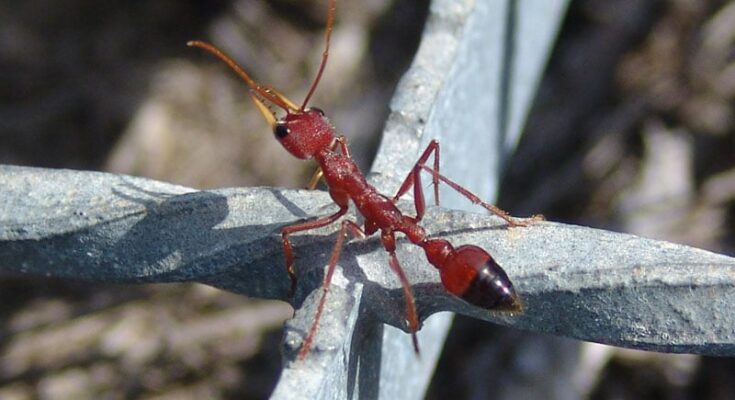As the sun sets near Sydney, Australia, bull ants leave their nests and head into the trees. In the trees, they hunt insects and gather tree sap and other things. Before dawn, they return to their nests with what they’ve gathered.
Unlike many other ants that follow scent trails from their colony mates, bull ants (Myrmecia midas) seem to be able to find their way around without chemical signals. Each ant goes its own way to get food, according to National Geographic.
How nocturnal bull ants find their way home in the dark is an important question. “It’s always kind of been this mystery,” says Cody Freas, a neuroethologist at Macquarie University in Australia.
A recent study has shed light on this puzzle. Bull ants seem to navigate using the polarized light from the moon, acting like a compass at night, researchers say.
Bull ants perceive polarized light patterns in the sky
While humans see light from the sun, stars, and moon, bull ants perceive a different kind of light called polarized light, which forms a pattern in the sky. This light is visible to them even when clouds cover the sun or moon.
In an experiment in which scientists placed a filter over the ants as they returned to their nests, they found that the ants used this polarized light pattern to guide their way home. The ants adjusted their path in real-time based on this pattern rather than relying on a familiar route, as reported by National Geographic.
Did you know? BULL ANTS travel with the help of MOONLIGHT!
This is the first time scientists have seen ants using polarised moonlight to navigate!
#AnimalFacts #Ants #Navigation #Moonlight #NocturnalAnimals pic.twitter.com/HqNxBUgV4n
— CoffeeTableScience (@CoffeeTableSci) July 11, 2024
The filter essentially alters the entire sky above them, says Cody Freas, the lead author of the study published recently as a preprint in the journal eLife.
Even during a crescent moon, when the polarized light signal is only 20 percent as strong as that of a full moon (which is already one million times weaker than direct sunlight), the ants demonstrated their ability to navigate using polarized moonlight.
While this study marks the first documentation of bull ants using polarized light for nighttime navigation, scientists have suspected the moon’s influence for some time.
“A big hint that the moon was kind of at play is that you see a 20 percent increase in foragers when the moon is full, versus a new moon [when the sky is much darker],” says Freas, referring to an earlier study of closely-related inch ants (M. pyriformis).
This observation suggested that bull ants might have better vision under stronger moonlight conditions.
Cody Freas notes that almost every bull ant manages to return to the nest after traveling up to 78 feet on the ground in darkness. In all his observations of these ants, he has observed only one instance during which an ant went missing.





